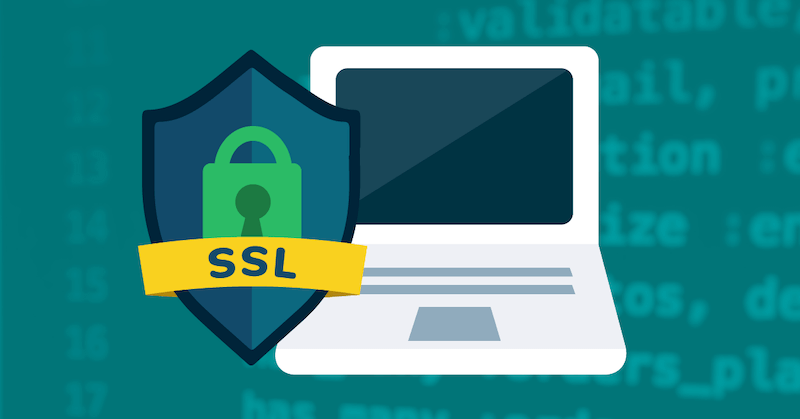As the owner of a WordPress website, you must prioritize the security of both your site and its users’ data. Implementing SSL (Secure Sockets Layer) encryption is an important part of website security because it establishes a secure connection between your website and its users. In this article, we’ll walk you through the steps of how to install SSL certificate and setting up https for your WordPress site and verifying that it’s HTTPS-enabled.
Table of Contents
What is SSL (Secure Sockets Layer)?
Secure Sockets Layer (SSL) is a security protocol that gives security to Internet communications with data encryption, sender authentication, and data integrity. SSL is used to protect network traffic. All websites with HTTPS addresses use the SSL/TLS protocol. It was developed by Netscape in 1995 as a security technology intended to be used for encryption, authentication, and integrity in Internet communications.
Every website you visit prefixes the entire URL with either HTTP or HTTPS. Your website must be configured to use Hypertext Transfer Protocol Secure (HTTPS) for data transmission when you set up an SSL certificate. SSL certificates are in place for securing SSL/TLS encryption, and they have the public key and the related information of the website, along with the website’s identity.
Why is an SSL Certificate Essential?

Websites with SSL certificates are trusted by search engines, browsers, and users. Other reasons are the following:
| 1) For your site to be safe, the browser should not flag it as unsafe | In cases where the website is not SSL-certified or the certificate has expired, visitors will see a message in the browser saying that the website is not safe. This manufacturing process can dispel your faith in this resource. |
| 2) To have an encrypted HTTPS connection | HTTPS is a protocol for transmitting data from a website to the machines of the website’s visitors. Encryption in HTTPS is the reason attackers cannot intercept the transmitted data. An SSL certificate from Let’s Encrypt verifies the site’s correct use of HTTPS with a high level of quality. |
| 3) Your website ranks higher in search results | Google recommends SSL certificate installation for every live website, regardless of its size, even for personal blogs or business card websites that do not process user information. Search services will punish the sites without SSL certificates by having them removed from the search results. |
how to install ssl certificate
Many web hosting companies provide free SSL certificates as part of their hosting plans. Log in to your hosting account and check the SSL/TLS section to see if your domain allows for a free SSL certificate.
The process for installing the SSL certificate differs according to your web hosting company and control panel. The general steps are as follows:
- Enter the control panel for your web hosting (e.g., cPanel or Plesk).
- Find the SSL Manager or SSL/TLS section.

- Select the “Install a new SSL certificate” option.
- Copy and paste the private key and any intermediate certificates from your SSL certificate into the relevant boxes.
- Save the modifications.
If your hosting company does not provide free SSL certificates or Let’s Encrypt integration, you can manually install an SSL certificate with a WordPress plugin. Popular plugins such as Simple SSL and SSL Zen have simple setup wizards for installing SSL certificates on your WordPress site.
- Update Your WordPress Settings
Go to Settings > General in your WordPress dashboard after installing the SSL certificate. Change “http://” to “https://” in the WordPress Address (URL) and Site Address (URL) boxes and save the changes.
- Test SSL Installation
After installing the WP SSL certificate on your website, make sure your website is loading safely over HTTPS. Use SSL Labs’ SSL Test to verify your SSL configuration and verify that there are no mixed content warnings or other issues.
Steps for setting up https?
To get HTTPS on your website, obtain and install an SSL (Secure Sockets Layer) certificate.
- Once the SSL certificate is installed, you must set up HTTPS on your web server. This often involves changing your server configuration files to point to the SSL certificate files and enable HTTPS connections.
- Once HTTPS has been enabled, make sure that all of your website’s internal links, resources (including photos, CSS files, and JavaScript), and canonical tags use the HTTPS protocol. This ensures that HTTPS is used to provide content securely.
- Configure 301 redirects from HTTP to HTTPS to ensure that visitors always reach your website through HTTPS. If you’re using a content management system like WordPress, you can get it through plugins or server-side setup.
- Test your website to make sure HTTPS is operating properly.
Conclusion
Securing your WordPress website with a free SSL certificate is an important step towards protecting your site and its visitors’ data. By following the steps indicated in this article, you can get a free SSL certificate for your WordPress site and gain the benefits of increased security and trustworthiness.
FAQS
For what duration is an SSL certificate valid?
Your SSL certificate provider will determine this. For example, Let’s Encrypt free certificates expire after three months and need to be renewed. An SSL certificate can be used for a maximum of 13 months. While most hosting companies handle the renewal procedure for you, there are situations where you’ll need to manually renew your certificate.
Is SSL free?
Yes, SSL certificates can be obtained for free using services such as Let’s Encrypt. These certificates can be used to secure websites using HTTPS and are compatible with all major browsers. While there may be additional charges associated with installing and maintaining SSL on your server, the certificate itself is available for free.
How can I determine whether my SSL certificate is active?
Go to your website first by opening an incognito window in your browser. A padlock will appear next to your URL in your browser if the SSL certificate is functioning correctly on your website. All of the major browsers will display a security alert on your website if something is missing or any errors. A program like SSL Checker can also be used to make sure everything is operating as it should and to find any issues.



